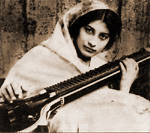|
2007-12-03 India-Pakistan
|
|
India to import 347 main battle tanks from Russia
|
1 | Archived material is restricted to Rantburg regulars and members. If you need access email fred.pruitt=at=gmail.com with your nick to be added to the members list. There is no charge to join Rantburg as a member. |
Posted by Seafarious 2007-12-03 00:00||
||
Front Page|| [12 views ]
Top
|
|
Posted by gorb 2007-12-03 04:41||
2007-12-03 04:41||
Front Page
Top
|
|
Posted by Excalibur 2007-12-03 08:49||
2007-12-03 08:49||
Front Page
Top
|
|
Posted by g(r)omgoru 2007-12-03 10:06||
2007-12-03 10:06||
Front Page
Top
|
|
Posted by ed 2007-12-03 10:38||
2007-12-03 10:38||
Front Page
Top
|
|
Posted by john frum 2007-12-03 15:10||
2007-12-03 15:10||
Front Page
Top
|
|
Posted by john frum 2007-12-03 15:15||
2007-12-03 15:15||
Front Page
Top
|
|
Posted by john frum 2007-12-03 15:19||
2007-12-03 15:19||
Front Page
Top
|
|
Posted by john frum 2007-12-03 15:22||
2007-12-03 15:22||
Front Page
Top
|
|
Posted by john frum 2007-12-03 15:26||
2007-12-03 15:26||
Front Page
Top
|
|
Posted by john frum 2007-12-03 15:31||
2007-12-03 15:31||
Front Page
Top
|
|
Posted by john frum 2007-12-03 15:33||
2007-12-03 15:33||
Front Page
Top
|
|
Posted by john frum 2007-12-03 15:34||
2007-12-03 15:34||
Front Page
Top
|
|
Posted by gorb 2007-12-03 16:10||
2007-12-03 16:10||
Front Page
Top
|
|
Posted by john frum 2007-12-03 16:23||
2007-12-03 16:23||
Front Page
Top
|
|
Posted by john frum 2007-12-03 16:40||
2007-12-03 16:40||
Front Page
Top
|
|
Posted by john frum 2007-12-03 16:50||
2007-12-03 16:50||
Front Page
Top
|
|
Posted by john frum 2007-12-03 16:51||
2007-12-03 16:51||
Front Page
Top
|
|
Posted by john frum 2007-12-03 16:53||
2007-12-03 16:53||
Front Page
Top
|
|
Posted by wxjames 2007-12-03 17:48||
2007-12-03 17:48||
Front Page
Top
|
|
Posted by john frum 2007-12-03 18:11||
2007-12-03 18:11||
Front Page
Top
|
|
Posted by mft 2007-12-03 23:11||
2007-12-03 23:11||
Front Page
Top
|
|
23:49 phil_b
23:11 mft
22:49 newc
22:45 SR-71
22:43 JosephMendiola
22:34 DMFD
22:29 JosephMendiola
22:22 DMFD
22:10 DMFD
22:09 trailing wife
22:00 trailing wife
21:53 g(r)omgoru
21:44 trailing wife
21:40 g(r)omgoru
21:37 Pliny Pheath1680
21:26 Eric Jablow
21:17 Whiskey Mike
21:15 Glavigum B. Hayes3666
21:15 trailing wife
21:13 Eric Jablow
21:02 Eric Jablow
21:00 Canuckistan sniper
20:57 Red Dawg
20:52 Procopius2k









|












































